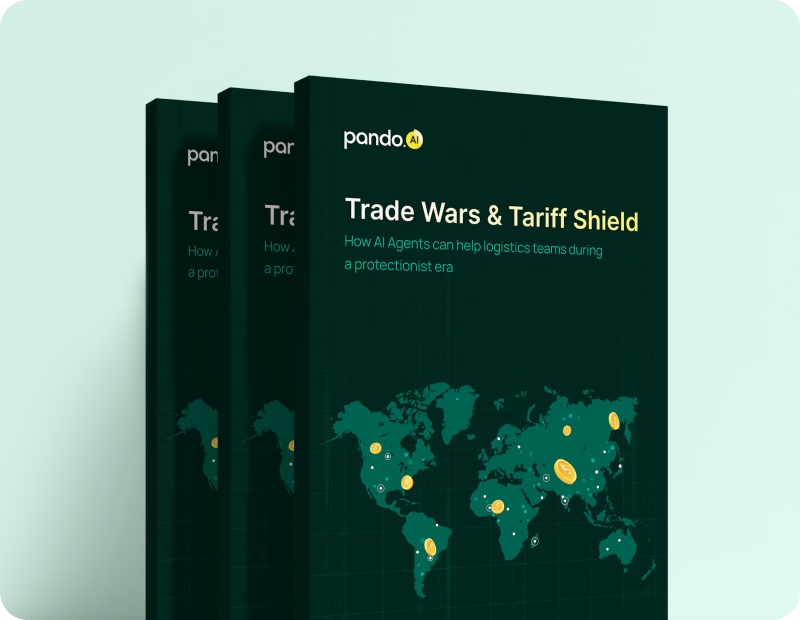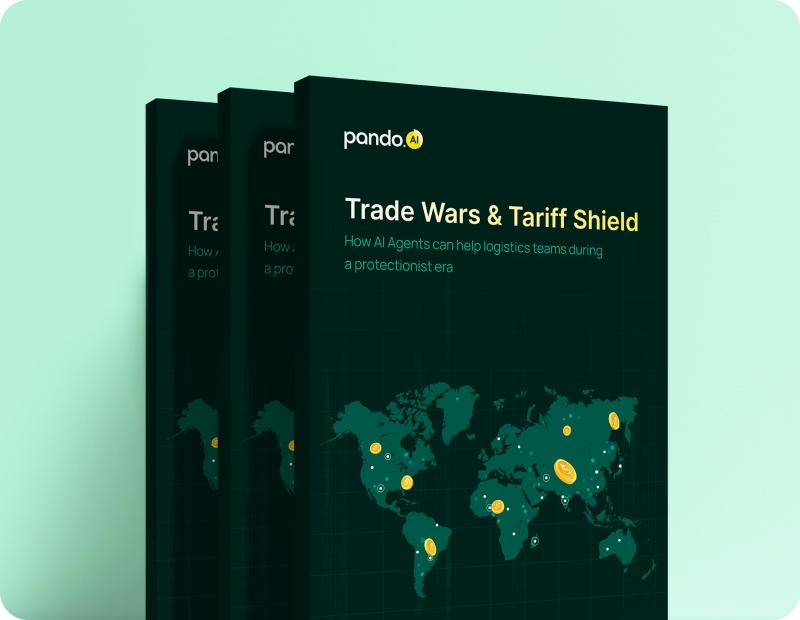-
Products Products
- Industry
- Initiatives
- Resources
- Company
- Book a demo

Before you go: Logistics leaders just dropped the truth on AI
The State of AI in Logistics 2025 is here — no hype, just real conversations and raw insights.
Optimizing every mile: How advanced delivery route planning strategies can improve customer experience
If you're in a competitive marketplaces that demand faster deliveries at lower costs, every mile in your delivery route counts.
Published on July 17, 2024 • 6 mins read
Rohit Lakshman

If you're in a competitive marketplaces that demand faster deliveries at lower costs, every mile in your delivery route counts.
From a customer’s point of view, modern logistics can often feel like magic: a few clicks on a preferred item, and the product arrives at their doorstep. Most customers are unaware of the complex processes that go behind delivery route planning and their products arriving on time.
The whole journey makes that possible—the customer placing an order, it being received at the manufacturing hub, the product being transferred to the central distribution centre to regional distribution centres, and finally to the nearest fulfillment center before being delivered to the customer’s doorstep.
The supply chain industry refers to this entire chain—from manufacturing to delivery—as all-mile logistics. Customers usually only see the last mile of this journey, but the challenge in planning logistics leading up to it lies in delivery route optimization.
Address tomorrow’s challenges with route planning
As a logistics manager tasked with planning delivery routes, your North Star is to provide an exceptional customer experience while maintaining profit margins.
Numerous facets must be considered when planning these routes, including:
🔸Fully utilizing fleet capacities
🔸Accounting for traffic and road blockages
🔸Leveraging drivers' skill sets and their local knowledge of service zones
🔸Avoiding overlapping deliveries in the same service area
🔸Prioritizing orders and meeting customers' time slot preferences
🔸Adhering to additional delivery instructions
🔸Consolidating multiple orders into a single shipment
🔸Considering Carrier Performance metrics to estimate delivery timeline
Additionally, there is increasing pressure from customers for fast, free deliveries.
Businesses aiming for market share (short-term gains) are primarily concerned with speedy deliveries and reducing transit time. However, enterprises aiming for brand loyalty (long-term gains) prioritize customer experience.
Route optimization has become a pivotal component for enterprises seeking to enhance customer satisfaction and maximize operational efficiency. In essence, route planning optimization is hitting two birds (brand loyalty and efficiency) with one stone.
Given these constraints, it is nearly impossible for just a team of people to plan cost-efficient routes that ensure a delightful delivery experience. You need technology. In the past, delivery route planning was done manually, using pen, paper, spreadsheets, whiteboards, and physical maps.
Today, AI-powered route planning, enhanced by telematics and IoT, provides real-time tracking of traffic, vehicles, driver behavior, and fuel consumption, resulting in more robust and efficient routing.
Let’s dive in to find out how advanced route planning strategies can contribute to a delightful customer experience.
What is route planning?
Route planning is the process of determining the most efficient and cost-effective route for transportation and delivery, enabling drivers to complete the maximum number of stops in the shortest possible time.
For instance, if a product needs to be delivered from location A to location F, and there are additional deliveries to B, C, D, and E, one vehicle can efficiently deliver to all five locations instead of assigning different vehicles for each stop.
Route planning has come a long way with advancements in technology. Modern components of advanced delivery route planning include optimal sequencing of orders, dynamic route adjustments, predictive analytics, and integration with real-time data.
These features allow for adaptive routing based on current traffic conditions, weather, and other variables, ensuring optimal delivery efficiency.
Advanced route planning offers a superior customer experience by providing more accurate delivery windows, reducing delays, and enhancing overall reliability. This not only improves customer satisfaction but also boosts brand loyalty and operational efficiency for businesses.
Components of Delivery Route Planning
Logistics managers are counting on route planning solutions to boost their brand positions. The critical components of route planning include
- Route tracking: It uses GPS technology to monitor vehicles' locations in real-time and send notifications when drivers deviate from planned routes.
- Driver management: Logistics software has become sought-after for monitoring driver performance, such as customer feedback and average travel time, and fostering communication between dispatchers and drivers.
- Fleet management: It can help track vehicle maintenance schedules, allocate vehicles to drivers, and maintain an updated database in the fleet, such as capacity, specifications, and availability.
Why you need a route planner in 2024 and beyond
According to the Council of Supply Chain Management Professionals (CSCMP), business logistics costs in the US exceeded $2.316 trillion in 2022, equating to 9.1% of the country’s nominal GDP.
A 2023 report by the National Retail Federation (NRF) states that returns amounted to $743 billion in merchandise, with a total returns rate of 14.5% of sales. Rising logistics costs and a surge in returns are challenging enterprises like never before. How can businesses make their logistics cost-efficient and customer-friendly under these pressures? This is where contextual route planning becomes essential.
Route optimization significantly reduces costs and helps maximize order fulfillment. It goes beyond finding the shortest path, and seeking the most efficient route by considering fulfillment estimates, driver schedules, total stops, and available hours. Whether it involves long-haul or short-haul trucking, first-mile, mid-mile, or last-mile setups, route optimization creates the best possible cost-efficient and effective routes for logistics managers.
These optimized routes reduce the time drivers spend on the road, improve First Attempted Delivery Rates (FADR), and smartly combine forward and reverse logistics orders to maximize fleet capacity utilization.
This approach cuts down empty miles and makes the best use of available drivers without overburdening them.
Charting the way forward with logistics software
Logistics software or transportation management system (TMS) is a valuable tool for businesses aiming to enhance customer satisfaction through timely deliveries. Key features of logistics software include:
➡️ Route customization
➡️ Route optimization
➡️ Real-time traffic updates
➡️ Integration with vehicle tracking systems and navigation apps
Investing in a TMS, specifically for delivery route planning, improves delivery accuracy, efficiency, fleet productivity, data analysis, compliance, sustainability, and scalability. For instance, logistics software can prioritize regulations and road restrictions to avoid dangerous or restricted zones.
Now that you agree on the importance of investing in logistics software, the next key question is which solution your enterprise should choose.
Habituating consumers to fast delivery
Robust delivery route planning is thriving, thanks to the adoption of AI technologies, geocoder tools, and advanced analytics. Amidst cut-throat competition, effective route planning can be a key differentiator.
Here are some dynamics that highlight the strong potential of streamlining delivery operations with route planning:
🔹Connectivity with IoT sensors to acquire real-time information on vehicle performance, driver behavior, and fuel usage
🔹Predictive analytics to forecast traffic congestion and minimize delays
🔹Scaling operations to meet shifting demands and manage an influx of data sets
By leveraging these technologies, businesses can ensure faster, more reliable deliveries, ultimately enhancing customer satisfaction and staying ahead of rivals.
Taking your logistics planning game a notch higher
While route planning can help reduce fuel costs, monitor driver performance, and enhance customer experience, monitoring key performance indicators (KPIs) has become invaluable for delving into AI-powered supply chain solutions.
To maintain a competitive edge, emphasizing the following KPIs will help you win half the battle:
- Cost per mile
- Order fulfillment
- Unit economics
- Supplier performance
- Detention time
- On-time delivery
- Vehicle capacity utilization
- Sustainability
- Route adherence
Lately, route adherence has become pivotal amidst an uptick in pilferage. Detecting pilferage is challenging as only a few items are often taken from the complete shipment. Real-time tracking for shipments can bolster supply chain security, ensuring the integrity and reliability of your logistics operations.
What’s the road ahead for route planning and customer experience?
Effective delivery route planning involves more than finding the shortest path; it also involves ensuring timely deliveries that meet customer expectations.
By optimizing delivery routes, businesses can significantly enhance customer experience. Customers today expect fast and reliable service and optimized routes help achieve this by reducing delivery times, minimizing delays, and improving overall service efficiency.
This not only boosts customer satisfaction but also strengthens brand loyalty, as customers are more likely to return to a business that consistently delivers on time.
Are you considering a TMS for setting yourself apart in a competitive marketplace? Schedule a demo with our experts.
Subscribe to Pando blog and Crossroads newsletter now!
Stay up to date with the latest logistics, transportation, and supply chain tips and news.
Subscribe Here!













